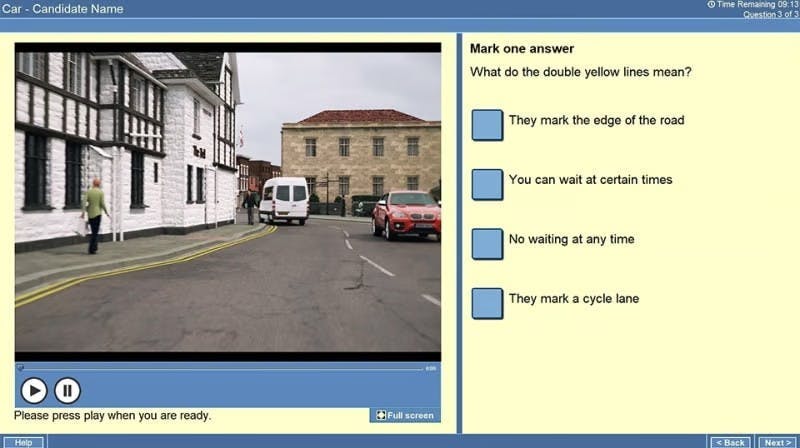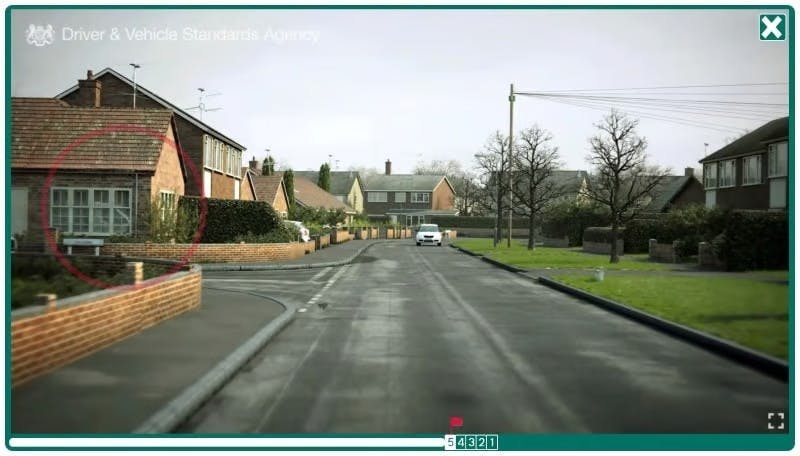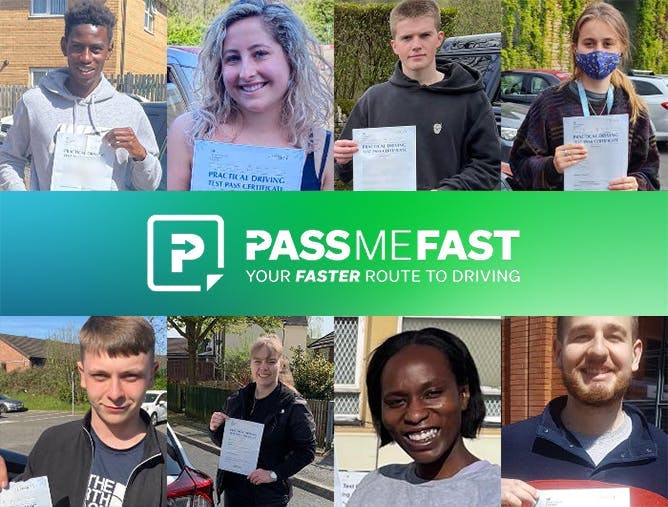
Though the practical test is almost invariably the most dreaded part of any driver's learning experience, it isn't the first obstacle they must overcome. Indeed, before a candidate can even book a practical test, they must pass the theory test. With so few column inches devoted to the theory test, however, many learners may feel slightly lost as to what exactly they're expected to do.
If all of the above sounds familiar, then worry no longer. Here at PassMeFast, we've created a theory test rundown that covers everything you need to know before you sit this crucial exam. We'll not only cover the types of questions you'll need to answer, but will guide you through how to prepare and what you can expect on the day.
Booking your theory test
Let's start at the beginning: booking a theory test appointment. You'll need your provisional driving licence to hand here, as your driving licence number is required to log in to the test booking system. You must also make sure to enter your name exactly as it is shown on your driving licence. This means including any middle names that appear.
After having logged in, the process of booking your test is quite simple. Enter your postcode, and you'll be provided with a list of test centres near to you. You can then select up to three of these test centres and compare available appointments at each of them.
Once you've found an appointment that suits you, it's time to book! Unlike practical tests, which can vary in price depending on which appointment you choose, all car theory tests cost £23. You can pay by either credit or debit card, and you'll receive an official confirmation email shortly after booking.
Getting prepared

Once your theory test appointment is booked, it's time to start preparing! This means that there's plenty of pre-test revision ahead—perhaps not the most enticing prospect, but a necessary step you'll need to take to be able to get on the road!
How to revise
Luckily, you don't have to go for the dry, textbook-based revision you've experienced in school exams. Due to the nature of the test, interactive study techniques are the way to go here. Revising on your smartphone with the official DVSA app is one of the best options, as it affords you the ability to revise on the go, with useful study sections, practice test questions and hazard perception clips, and the ability to check your progress through time.
The app isn't the only option, though. Online resources such as Theory Test Pro also provide interactive questions and clips that mirror the real test. Alternatively, for a more old school option, you could pop down to a local bookshop and pick up revision software on DVD, or supplement your revision with good old fashioned revision books. The choice is yours!
What to revise
No matter which method you choose, the important thing is to gain a solid understanding of all the topics that can appear on your test. These include:
- Alertness
- Attitude
- Essential documents
- Hazard awareness
- Incidents, accidents and emergencies
- Motorway driving
- Other types of vehicle
- Road and traffic signs
- Road conditions and vehicle handling
- Rules of the road
- Safety and your vehicle
- Safety margins
- Vehicle loading
- Vulnerable road users
On top of this bumper list of topics, anyone who's taken a look at a theory test app or revision book will know that there are close to 1,000 possible questions that could come up on your test. But while it's undoubtedly challenging, it's not quite as daunting as it sounds.
As you revise, you'll start noticing that many questions are actually rephrased variations of one another. You'll certainly need to retain a lot of information in order to do well, but it's not the impossibility it may first appear to be.
On top of the theory questions, you'll also be well served by taking a look at the hazard perception section of your exam. This section is made up of a series of video clips. For obvious reasons, you can't see the actual clips used in the exam, but there are plenty of practice materials available online, including at the official Government website Safe Driving for Life. You'll need to pass both the multiple choice and hazard perception sections of your test to pass the test overall, so don't skip out on either!
On the day
So, the big day's finally arrived! All you have to do is get to your local test centre (we'll let you sort that part out for yourself!) and be aware of what you must and mustn't bring with you. Be sure to arrive at least 10 minutes before your scheduled appointment.
You must bring your photocard provisional driving licence with you to your test. If not, you won't be allowed to sit your theory test and will lose the fee you paid for it. If you have an old-style paper provisional driving licence, you must bring both this and a valid passport.
When you arrive, you'll need to present this licence to a member of the test centre staff, who will confirm your details. You'll have to sign a digital document to confirm that you are the licence holder. After this, you'll receive the rules and instructions of the theory test.
You cannot bring personal belongings into the test room with you. This includes a wide variety of items, notable amongst which are bags, mobile phones and watches. You'll be provided with a locker in which to place your belongings for the duration of your test.
A member of staff will call you through to the test room, where your licence will be checked again. You'll then be assigned a computer on which to take your test—you'll be logged on automatically. Then, it's time for the test to begin!
Taking the test
When you sit down at your assigned computer, the first thing you'll see are some basic instructions on how the theory test will work. After this, you'll have the chance to go through a few practice multiple choice questions. You don't have to answer these, but they're a useful way to get to know how the test software works. Once you've completed (or skipped) these, the test begins in earnest.
Multiple choice questions
The first section you'll face on your test consists of a series of 50 multiple choice questions. These will test your knowledge on the topics listed in the What to revise section above, ensuring you have both a good grounding in the theoretical side of driving and a knowledge of the Highway Code.
You will have 57 minutes in which to answer the 50 questions, and you will need to get a score of at least 43 out of 50 to pass this section. Each question will appear on screen thus:

For each question, simply click on the answer you wish to select. You can also click on the Flag button at the bottom of the screen to remind yourself to return to this question later on in the test. Clicking the Review button, meanwhile, will open a screen listing:
- The total number of questions
- The number of complete questions (those you have answered)
- The number of incomplete questions (those you have not yet answered)
- The number of flagged questions
From this screen, you can then select to review your unanswered questions, flagged questions, or all 50 questions.
You can use the End test button to finish the multiple choice section of the test early. This might come in handy if you've breezed through the questions, but be sure to check through your answers thoroughly before ending the section—there's no going back once it's over!
Case studies
Out of the 50 multiple choice questions you'll need to answer, the first 45 will all be in the same “pop quiz” format. The last 5, however, will be presented as a case study.
For the case study questions, you'll be given a short written scenario, which you'll see on the left-hand side of your screen. On the right hand side, you'll be asked questions about this scenario.
The point of the case study is to assess whether you're able to apply the theoretical knowledge you've acquired to real-life driving situations. As with the first 45 questions, the case study questions are all multiple choice.
Please note that this is not a separate section of the test, but instead a subsection of the multiple choice questions. Your score for the multiple choice section therefore includes your performance on the case study questions.
Hazard perception
After you've answered the multiple choice sections, you'll have the chance to take a three-minute break if you wish to do so. Then, it's onto the hazard perception section of your test.
As the name implies, the purpose of the hazard perception section is to test your awareness of and ability to react to hazards. A hazard is anything on the road that could cause you to slow down, stop or change direction.
There are two types of hazard: static and developing hazards. Static hazards refer to permanent features of the road, such as roundabouts, bends, traffic signs, level crossings, etc. A developing hazard, meanwhile, can refer to many things, such as a cyclist emerging from a side road, a child running out from behind a parked car, or a lorry moving onto your side of the road to make a turn.
This section will test your reactions to developing hazards. During the section, you will be shown 14 video clips. Each video clip lasts for around a minute and contains at least one developing hazard; one of the clips will contain two. Since 2015, realistic CGI video clips have been used, replacing the old filmed clips that had been in place since 2002. You will see each clip only once, and you won't be able to go back and review your answers later. After all, you can't do so when driving in real life!
For each developing hazard, you will have the opportunity to score up to 5 points. This means that you can score up to 5 points for most clips, and up to 10 for the clip with two developing hazards. You must score 44 out of a maximum of 75 points in order to pass this section.
To score, you must click when you notice a developing hazard. If you click as soon as the hazard starts to develop, you'll score the maximum 5 points. This drops over time to 4, 3, 2 and then 1 point; leave it too late, and you'll score nothing at all. You can see an example of this scoring window in the image below.

In certain circumstances, you may click slightly too early, which could inadvertently leave you outside of this scoring window. As such, you may wish to click more than once to be sure that you score points here.
During the clips, you may see certain events which initially look like they may develop into a hazard, but ultimately do not do so. Don't worry if you click during these events—you won't lose any marks for doing so. The important thing is ensuring that you do click during the scoring window for an actual developing hazard.
One thing you must avoid is clicking in a pattern. The DVSA is well aware of the possibility of candidates simply clicking near-constantly in the hope that they'll luck out on every clip. This strategy, however, won't work. That's because anti-cheating technology is in place to detect candidates who seem to be clicking in a pattern; if found to be doing so, you'll score zero. So, be smart, and keep your eyes on the (CGI) road!
After you've watched and clicked your way through all 14 clips, the test will automatically come to an end. Now it's time for the moment of truth.
In some cases, candidates may be asked pilot and feedback questions at the end of their theory test. Don't worry—you may choose not to answer these questions if you wish, and they won't have any impact upon your score. The DVSA includes these questions purely for the purpose of improving the theory test in future.
Results

Once your test is over, you'll leave the exam room and go back to the entrance of the test centre. You'll need to show your licence to the member of staff at the desk to get your results, which should be available within minutes, if not immediately.
If you've passed: congratulations! You'll receive your theory test pass certificate. This includes your theory pass number, which will later allow you to log into the DVSA's online practical test booking service. You may also receive a booklet with useful advice on what to do next.
If you've failed: don't give up! You'll have to wait another three days to book another theory test, so use this time wisely and brush up on any areas you struggled with.
No matter whether you pass or fail, you'll receive a breakdown of your score for both sections of the test. For the hazard perception section, you'll find out on how many clips you scored 5, 4, 3, 2, 1 and 0 points. For the multiple choice section, you'll get an overall score, and you'll also find out the topics of the questions you answered incorrectly (though not the exact questions!).
What happens next?

If you were unlucky enough to have failed, it's time to start revising again! The next possible date you can retake your theory test is in three working days. If you wish, you can change your theory test to an earlier appointment if you'd like to retake your test quickly, or push it back if you feel you need more time to prepare.
Learners who've passed can breathe a sigh of relief before moving onto preparing for their practical test. Your theory test pass is valid for two years, so you've got time! If you'd still like to get things done lickety-split, though, then you may want to consider booking a fast-track practical test to beat the usual long waiting times.
Most importantly, be sure to keep on top of your theory knowledge. While you might not be sitting the test again, the information you've gained here is crucial when you hit the roads for real, and is the foundation of becoming a safe, confident driver for life.
Subscribe for driving advice, offers & more
We'd love to let you know about our courses, news and offers via email. You may unsubscribe at any time.
Star Genie Limited trading as PassMeFast. Company number 10093359
Copyright © 2024 owned by Star Genie Limited
PassMeFast, Blue Tower, MediaCityUK, Salford, M50 2ST

